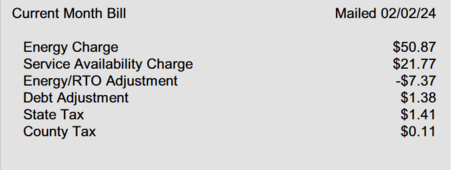The important pieces of information to know for peak shaving are:
- what is the size of the peaks
- what is the duration of the peaks
- what is the frequency (how many months would you see these peaks)
- what are the components that make up the peaks
So if the peaks are large like 15 KW
If they last a long time say 10 hours in a day mainly at night
You will need 150 KWHs or $45,000 of batteries to fill that usage gap. That will be very expensive to fill with batteries/inverters. If you plan for 10 hours and the gap turn out to be 10:15 you will not gain anything, because your battery gave out before the peak ended. You will be charged anyway.
Gas Fire Place
This would reduce the need to run your resistive heat.
Just a thought, but since you are saying this issues is relatively infrequent when you have extremely cold weather, you might consider a gas fireplace. These are available in a variety of BTU outputs and efficiencies. It has the added benefit of giving you some emergency heating when the grid is down. Note that some of the newer systems use fully electronic control systems. Older systems worked like old water heaters where the required electricity was supplied by a thermocouple. So it may actually require batteries to turn it on when your power is down.
So, for about $7000.00 one of these could be installed in your house. If you don't have propane or gas and you don't want to get it installed, (it sounds like you are all electric) this is not an option. It is rather ironic that the hardest houses to take "Off Grid" are actually the all electric houses. Their electric power requirements are huge compared with houses that use some natural gas. My house has a natural gas furnace, water heater, and stove. It does have an electric dryer and wall oven, but usage of those can be managed. Would I cook a turkey when the grid is down and there is no sun? Probably not.
Before I had a full home back up, my plan was to use my gas fire place if the grid went down. Would it have heated my home as evenly as my furnace? No. Would it keep me reasonably comfortable and prevent the pipes from freezing in an emergency? Certainly.
One thing I am not sure about is this. Is this demand charge per month for your peak electricity for the whole year, or is it by the month in which the peak occurs? If this saves you 70 a month, it will take 8 years to pay back the cost. If the charge only applies to say the two coldest months where the resistance heat is being used, the pay back is 50 years.
Load Management
Rather than supporting peak usage through batteries and inverters, this would reduce the actual amount of energy being used at one time. For example if you want your house heater to have priority over your clothes dryer and water heater, you could program this into your device. Your water heater could run when the heater was not running. Maybe you make the range a higher priority than your heater. You can still cook, because the device will turn off the heater until you are done cooking.
This solution by Sol Arc seems like it would be a potentially great solution to your problem. The only issue is that they have been saying this is "coming soon" for 1.5 years. Apparently they are having challenges getting this out the door. I am just guessing, but my understanding is that for a 240 volt circuit it requires that two relays be paralleled together. Now when using 240 volts in a normal panel you need to provide a mechanical interlock to insure that BOTH hot leads are disconnected when you switch the breaker off.
The device has 14 circuits, so it can manage 14*120 volt circuits or 7*240 volt circuits by paralleling 2 circuits together. Now the problem would be that if this device was not configured correctly or there was some kind of a glitch, it could lead to only one leg of the 240 volt circuit being disconnected.
Backup Generator
Many commercial properties have "Load Shedding" agreements with the power company. If you could use a back up generator during days with extreme cold you would avoid the extra charge. I'm not sure this on makes sense unless a generator is already part of your plans as you will need a large one to support these loads.
Throwing expensive inverters and batteries at the problem may not be the best way to solve it.



